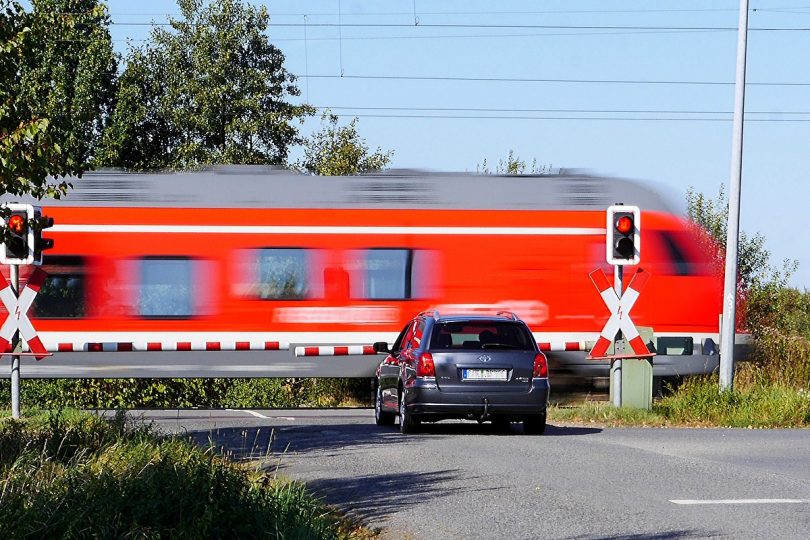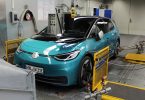Shift2Rail ‘Lighthouse Projects’ presented
As global mobility demands rise, the railway sector faces the challenge of making trains a more attractive option for passenger and freight transport. This involves developing new and innovative ideas to create a more efficient, reliable and costumer-centred service. In 2015 – during the ramp-up phase of Shift2Rail – the S2R ‘Lighthouse Projects’ (Roll2Rail, In2Rail, IT2Rail, Smart-Rail) received investments worth EUR 52 million to make considerable advances towards achieving the Single European Railway Area (SERA) and to set the ground for the five Innovation Programmes at the heart of Shift2Rail. The ‘Lighthouse Projects’ presented their most promising achievements and final results on 19 April 2018 at a joint conference in Vienna.
Roll2Rail – Devising the next generation of rail vehicles: Lighter, quieter and more energy-efficient.
Part by part, engineers re-designed rail vehicles and their components, seeking to make them lighter, quieter, more reliable and energy-efficient. Technologies to reduce the volume, weight and energy consumption of traction converters, considered the train’s engine, are key to improving the overall performance of rolling stock. Roll2Rail researchers created a prototype of a traction converter for metro trains using a new promising technology: Silicon carbide (SiC) components. The model achieved higher performance rates, while at the same time being lighter, smaller and quieter than conventional traction converters. This new material can reduce the weight of current models by 20% and the volume by 30 % as lab tests in the Roll2Rail project demonstrate.
Lighter car bodies also help reduce the energy consumption of trains. Engineers re-thought car body designs and tested the use of lightweight materials such as aluminium foam sandwich, composite sandwich and high-strength steel tubes in urban and high-speed trains.
To make trains quieter, Roll2Rail devised noise prediction methodologies to gauge the noise level of traction elements ensuring that trains comply with increasingly strict noise regulations as well as meet the expectations of customers and citizens.
Using LTE for their demonstration, Roll2Rail laid the groundwork for packet-based wireless communication systems in trains providing the basis for virtual coupling, a system deploying wireless technology to make trains run together as one without physical contact.
Shift2Rail projects are incorporating these insights into the current research to further improve the design of rolling stock and bring the future generation of passenger trains to the market.
In2Rail – Managing rail infrastructure the 21st century way
Using the Internet of Things is about to stir up rail infrastructure management as we know it since it enables the monitoring of rail assets in real-time and the prediction of damages long before they happen.
In2Rail targeted new inspection methods for continuous monitoring of the track and rail assets including bridges and tunnels permitting infrastructure managers to examine trends over time and anticipate maintenance needs. The main advantage of these methods is that they enable the planning of repair work with minimal traffic disruptions.
In2Rail also developed methodologies to provide network managers with real-time information on the status of rail assets such as switches and crossings, tracks and catenaries. Reliable live reports could help save energy and allow infrastructure managers to monitor the network so that they can dynamically adapt train schedules if a disruption occurs.
Aiming to enhance actual rail assets, researchers envisioned new designs for more resilient switches and crossings systems. These new models would allow trains to change tracks in a quieter, safer and faster manner.
All the concepts and methods developed within In2Rail serve as the basis for current Shift2Rail projects propelling the creation of a safer, more reliable, sustainable and cost-effective rail network infrastructure.
IT2Rail –A seamless multi-modal travel experience
Multi-modal trips should be as quick, easy and stress-free as using a single mode. The IT2Rail project laid the groundwork for a shared and open platform for information, management and payment systems facilitating a seamless multimodal door-to-door travel experience.
A key aspect of this project is substantial progress towards a semantic-based interoperability framework, which allows the integration of travel service providers using different standards and legacy systems in an economic way as there won’t be the need to change the different systems. The wide use of the ecosystem would mean that passengers do not have to consult different websites to book their trips but instead receive complete travel offers for multimodal trips (air, rail, coach and urban public transport) in a one-stop-shop.
After choosing the most suitable option, passengers receive all required electronic tickets, which can even be validated if the phone runs out of battery using NFC contactless technology. As soon as a person embarks on a journey, they receive notifications of disruptions and suggestions for alternative itineraries ensuring a stress-free and uninterrupted travel experience. The traveller will also be informed about the weather at the destination and will be guided through the different steps of the trip helping them find their way around stations. In this way, passengers have the opportunity to plan, book and pay trips involving multiple transport modes in a fast and easy manner.
Shift2Rail projects are currently implementing further necessary steps to accomplish interoperability with other transport modes and mobility services in different regions, cities and across borders to make rail a more attractive option for passengers.
Smart-Rail – Delivering goods faster, cheaper and more reliably
Smart-Rail provides solutions to creating more visibility and cooperation in the freight sector. As companies currently often only know what is happening on their own paths and locating cargo at a specific point can be time-consuming, researchers within Smart-Rail devised a framework for a unified platform allowing data to be shared in a safe manner. Block chain technology permits stakeholders to receive and share information within an independent network. Using message encryption, the network guarantees that sharing confidential information with a limited set of stakeholders is safe.
To further increase the visibility in the system, researchers equipped vehicles with GPS trackers to assess the performance of freight trains along specific routes. Collecting and analysing this data, they were able to identify the causes for delays and disruptions. This allows freight companies to devise efficient measures making goods travel faster and increasing customer satisfaction.
Within Smart-Rail researchers also developed new business models based on the integration of an independent actor. This coordinator oversees the whole process, managing flows and demands from different actors and develops a strategic plan in case of disruptions. To substantially strengthen cooperation in the sector, Smart-Rail offered policy solutions for successful cross-border cooperation eliminating current bottlenecks.
The achieved impact is very promising: The project has demonstrated that a modal shift of 30% to 60% of rail volume from road to rail per year is possible without any loss of cargo in case of disruptions. Based on the achievements of Smart-Rail, Shift2Rail projects are pushing the development of an even more cost-effective and attractive service to shippers forward, continuously removing freight transport from the already-congested road network.
Shift2Rail – promoting innovative high-performing railway systems
Providing a platform for members in 26 EU countries to join forces, to share knowledge and expertise and to facilitate interoperability across borders, the Shift2Rail initiative works to promote cost-efficient, reliable and high-performing transport systems. The achievements developed within all four ‘Lighthouse Projects’ provide the framework for current and future research and innovation activities within the Shift2Rail programme.
Related articles:
– The organization of European railways: Confusing for the customers (8. Mai 2017)
– EU-Parlament stärkt Europas Bahnindustrie (9. Juni 2016)
– „K2 Digital Mobility“ – Entwicklung des digitalen Fahrzeuges (28. Juni 2017)





